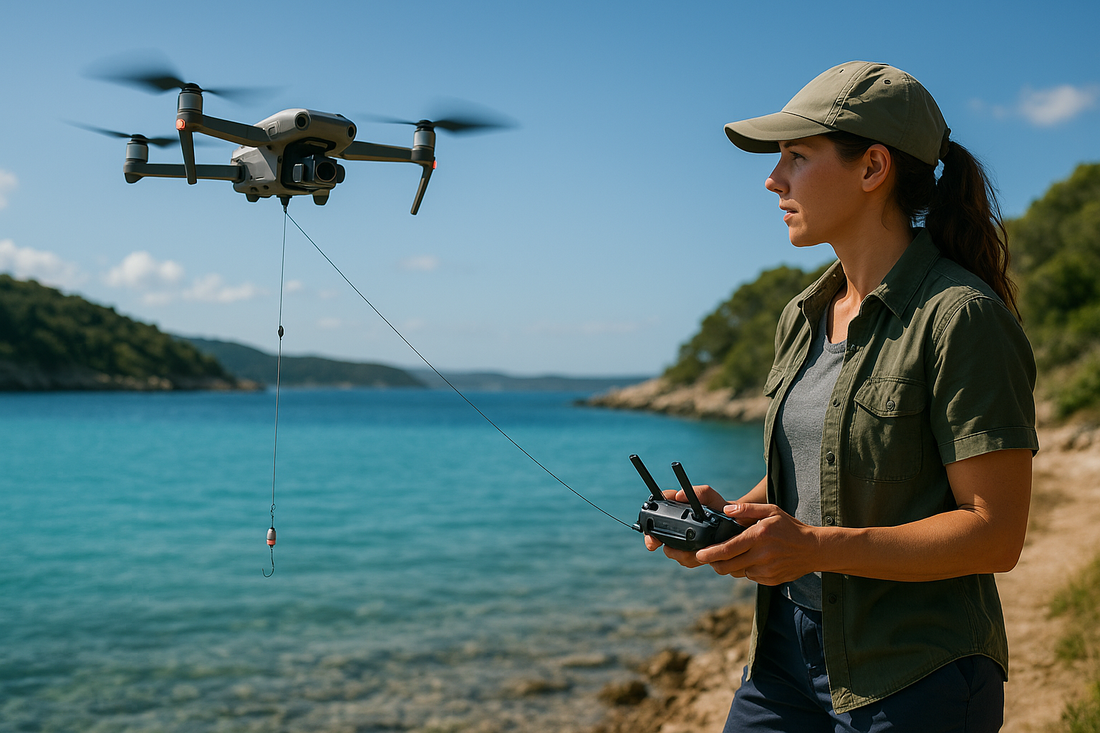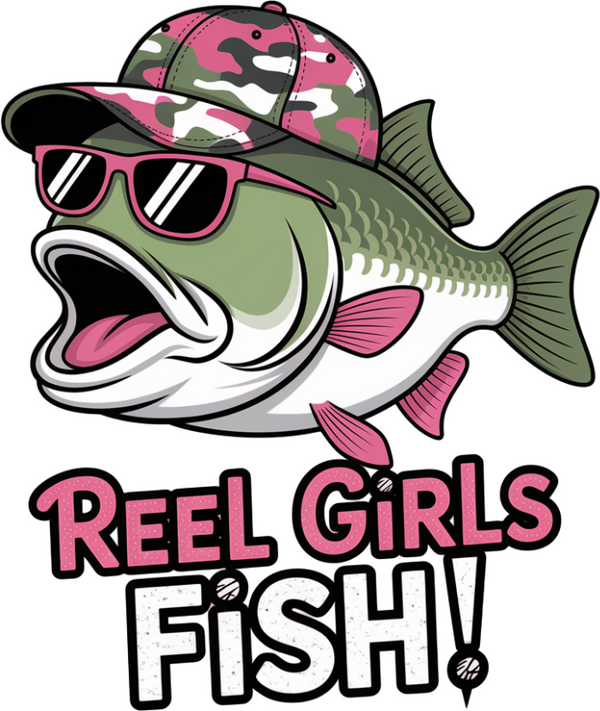
Drone Fishing in Western Australia
Share
Reimagining Coastal Angling in the 21st Century
Introduction
Australia’s western coastline stretches in a wild, sweeping arc, where turquoise waters crash against rugged cliffs and golden sands. It is here, beneath endless skies and sunburnt earth, that a new age of fishing has quietly taken flight—drone fishing. This innovative approach has captivated recreational anglers and adventure seekers alike, revolutionising the old rituals of casting lines and reading tides. In this blog, we’ll delve into the phenomenon of drone fishing in Western Australia, exploring its origins, techniques, legalities, environmental impact, and the promise it holds for the future of coastal angling.
What Is Drone Fishing?
Drone fishing merges traditional angling with the latest technology. Essentially, it involves using a remote-controlled aerial drone to transport a baited line far beyond the reach of human casting. The drone carries the bait and sinker out to a precise location—often hundreds of metres offshore—before releasing the payload and returning to shore. Anglers can then wait, reels poised, for the telltale tug of a bite from species that would otherwise be out of reach.
The Rise of Drone Fishing
Drone fishing is a relatively new phenomenon in Western Australia, emerging around the mid-2010s as drone prices dropped and their capabilities improved. The state’s vast, sparsely populated coastline offers some of the best fishing grounds in the country, but many of its prime spots are difficult to access by boat or prone to dangerous surf conditions. Early adopters recognised drones as a game-changing solution, opening up new waters without the need for a vessel or risky wading.
Why Western Australia?
Few places are as suited to drone fishing as Western Australia. The region boasts a rich diversity of marine life, from the mighty mulloway and tailor to threadfin salmon, snapper, and even shark. Many beaches, such as Lancelin, Exmouth, and Broome, have long been popular with shore-based anglers. Yet strong winds, rips, and unpredictable conditions often limit how far one can cast. Drone fishing offers the ability to target deeper channels, reefs, and drop-offs—places teeming with fish, but traditionally unreachable from land.
How Drone Fishing Works
Equipment Essentials
At the heart of drone fishing is, of course, the drone itself. Not every drone is suitable—anglers typically rely on robust, waterproof models with high payload capacities and long battery life. Many specialist fishing drones feature bait release mechanisms, GPS waypoints for precision placement, and real-time camera feeds for scouting fish. Popular models include the SwellPro SplashDrone and Gannet Pro.
Beyond the drone, standard surf fishing gear is required: rods, reels, and heavy-duty lines able to withstand spirited runs from large ocean fish. Anglers also need a bait release clip, which attaches the line to the drone, and a strong sense of responsibility—both to ensure safety and that no equipment is lost at sea in case of technical mishaps.
Tehnique: From Shore to Sea
Drone fishing begins like any other session: the rod is rigged, the bait carefully selected and hooked, and the line attached to the drone’s release mechanism. After a safety check, the drone lifts off, trailing the line behind it. The angler steers the drone out to the chosen spot—often identified beforehand using satellite maps or the drone’s live camera feed. With a simple command, the bait is dropped, the drone returns, and the waiting begins.
Experienced drone fishers use technology to their advantage, monitoring currents, underwater structure, and even schools of fish visible from the air. The real skill, however, lies in timing the release and managing the fight once a fish takes the bait.
Western Australia’s Best Drone Fishing Destinations
Lancelin
Just north of Perth, Lancelin’s sweeping beaches and offshore reef systems beckon drone anglers. The area is renowned for tailor, mulloway, and snapper, with deep gutters accessible only by drone or boat.
Exmouth
Further north, Exmouth is famed for its pristine waters and abundant marine life. Here, drones are used to target coral reef edges and drop-offs that are home to giant trevally, queenfish, and barramundi.
Broome
On the Kimberley coast, Broome offers the chance to land threadfin salmon, northern mulloway, and even juvenile sharks—all from the comfort of the sandy shore.
Local Tips
· Always check wind conditions before flying; gusts can quickly send even powerful drones off course.
· Respect other beach users and avoid flying near swimmers or sunbathers.
· Scout for deep channels and structure using drone cameras—these are prime fish-holding areas.
· Use strong lines and reliable bait-release mechanisms to avoid losing gear.
· Never exceed the payload limits of your drone; crashes can be costly.
Legal Considerations
Drone fishing, while exciting, is subject to a host of regulations in Western Australia. Drones must be operated in accordance with the Civil Aviation Safety Authority (CASA) rules, which include limits on altitude, proximity to people, and no-fly zones near airports and national parks. Fishing drones cannot be flown over crowds or in ways that endanger wildlife.
Additionally, anglers must adhere to Fisheries WA rules regarding catch limits, protected species, and gear restrictions. There are currently no specific bans on drone fishing in WA, but responsible and respectful practice is essential. It is recommended to check local regulations and any temporary closures before launching.
Environmental Impact
As with any technological innovation, drone fishing’s environmental impact must be considered. Drones can potentially disturb nesting shorebirds, sensitive habitats, or protected areas if flown indiscriminately. The risk of lost drones or fishing gear adds to marine debris concerns.
Responsible drone anglers minimise these risks by following all guidelines, retrieving lost gear, and choosing locations well away from ecologically sensitive zones. Advocacy groups in WA have called for education and clear codes of conduct to ensure drone fishing remains sustainable and low-impact.
The Social Side: Community and Competition
Drone fishing has fostered a vibrant community in Western Australia. Social media groups share tips, videos, and tales of epic catches, and local tackle shops increasingly offer drone-friendly equipment and workshops. Informal competitions and meet-ups are common along the coast, where anglers challenge each other to land the biggest fish or reach the deepest water.
Stories abound of dramatic battles with trophy fish—mulloway running hundreds of metres offshore, or snapper landed from beaches where they were once only a boat fisherman’s prize. The camaraderie among drone anglers reflects the broader Australian fishing culture: respect for nature, a love of adventure, and mateship.
Challenges and Risks
Drone fishing is not without its pitfalls. Technical failures—such as battery loss, signal dropouts, or strong wind gusts—can result in lost drones and tangled lines. There’s a steep learning curve for newcomers, and the initial investment in quality equipment can be significant.
Moreover, some traditionalists view drone fishing as an unfair advantage, raising questions of sportsmanship and the ethics of technology in angling. These debates echo wider conversations in outdoor recreation about the balance between innovation and tradition.
The Future of Drone Fishing in WA
As technology continues to evolve, so too does the potential of drone fishing. Improved battery life, smart navigation, and underwater imaging promise even greater precision and safety. Western Australia’s unique coastline will remain at the forefront of these changes, offering endless opportunity for exploration and sustainable practice.
With education, regulation, and a spirit of stewardship, drone fishing can enhance both the enjoyment and conservation of WA’s marine riches. Whether you’re an old hand or a curious newcomer, the thrill of seeing your bait soar out to sea—and the possibility of what lurks beneath—ensures that this cutting-edge approach will remain an exciting chapter in the story of Western Australian fishing.
Conclusion
Drone fishing in Western Australia is more than a fad; it’s a marriage of innovation and tradition, a new lens through which to view the timeless pursuit of the catch. As the sun sets over the Indian Ocean and shadows stretch across the sand, the hum of a drone overhead heralds a new era for anglers. It is a challenge, an adventure, and, above all, an invitation: to explore, to respect, and to revel in the natural bounty of Australia’s western shores.
